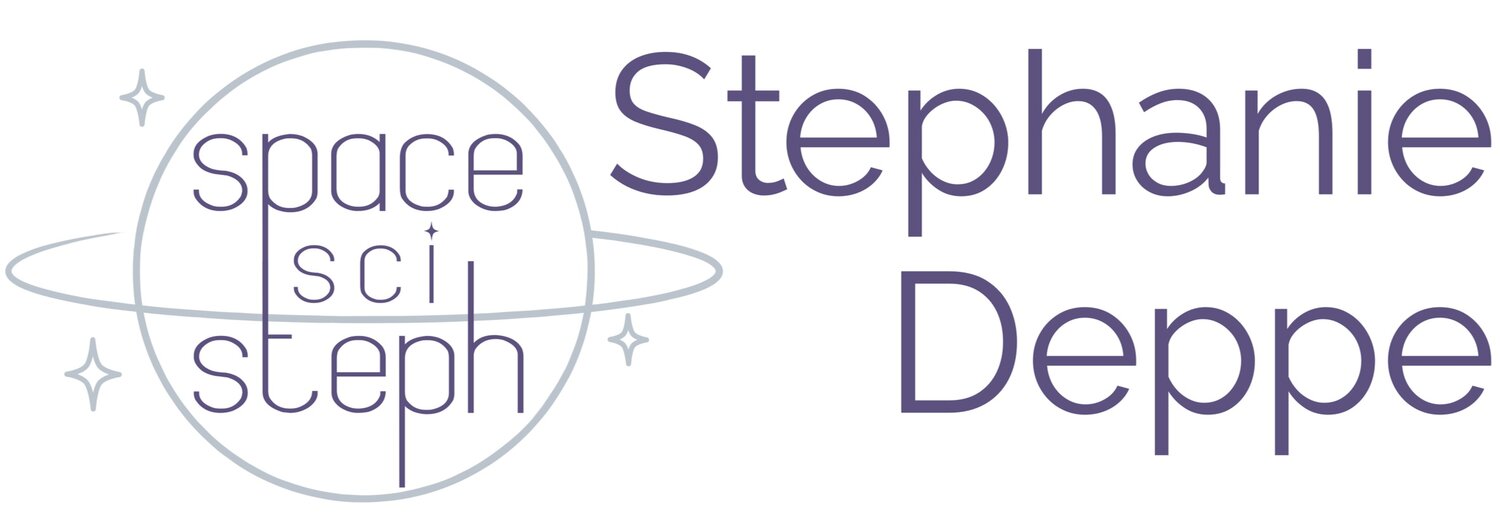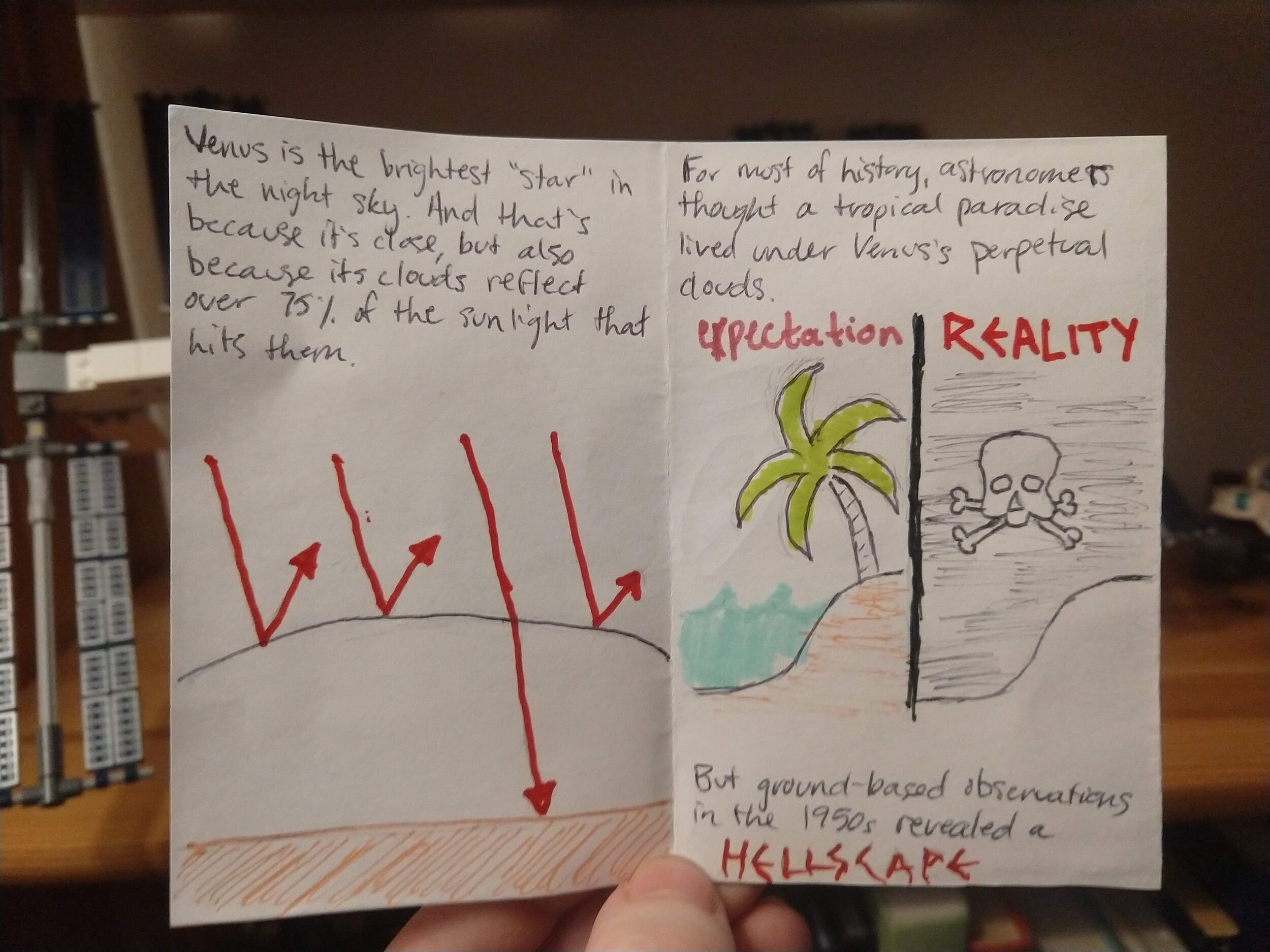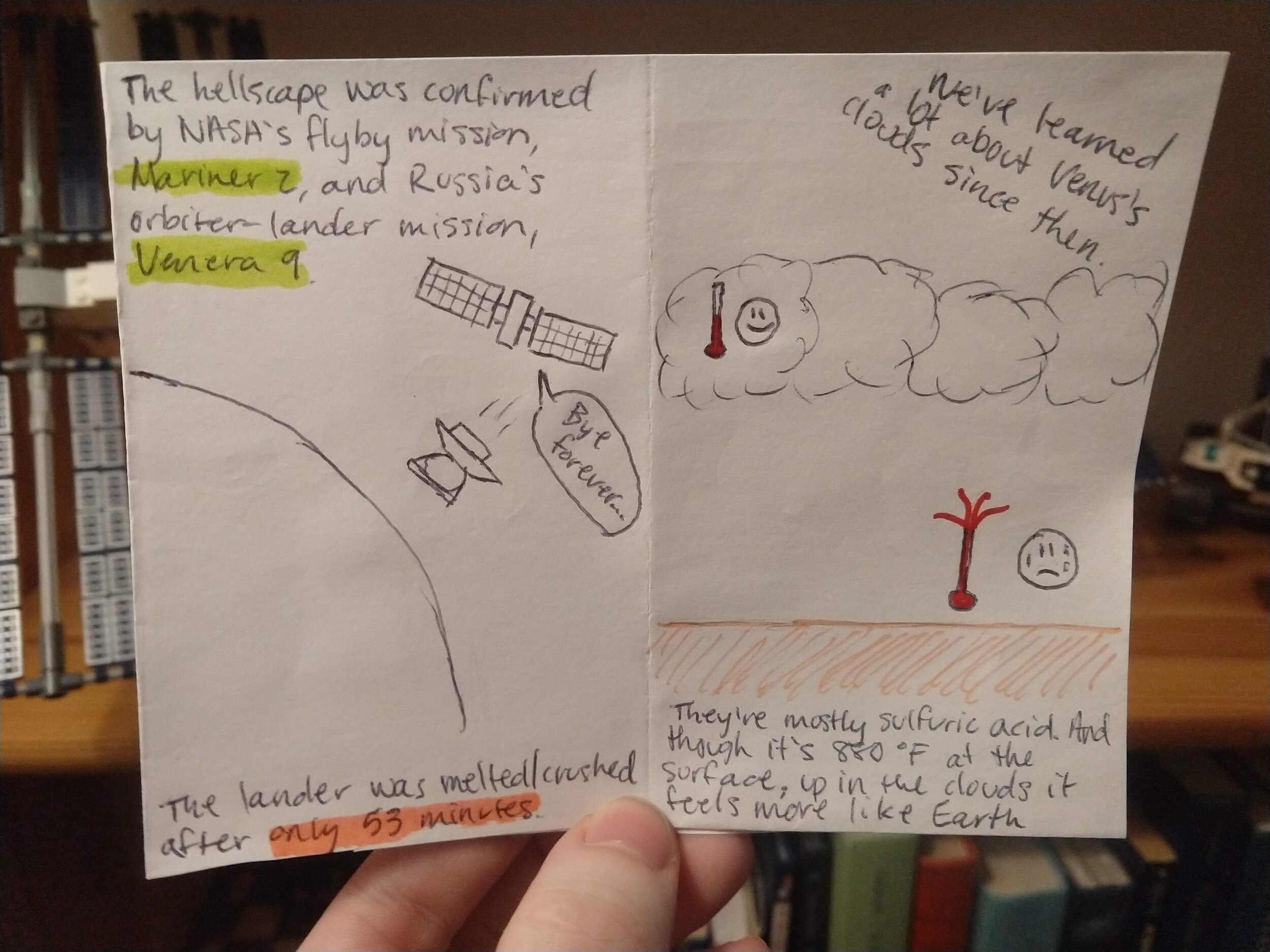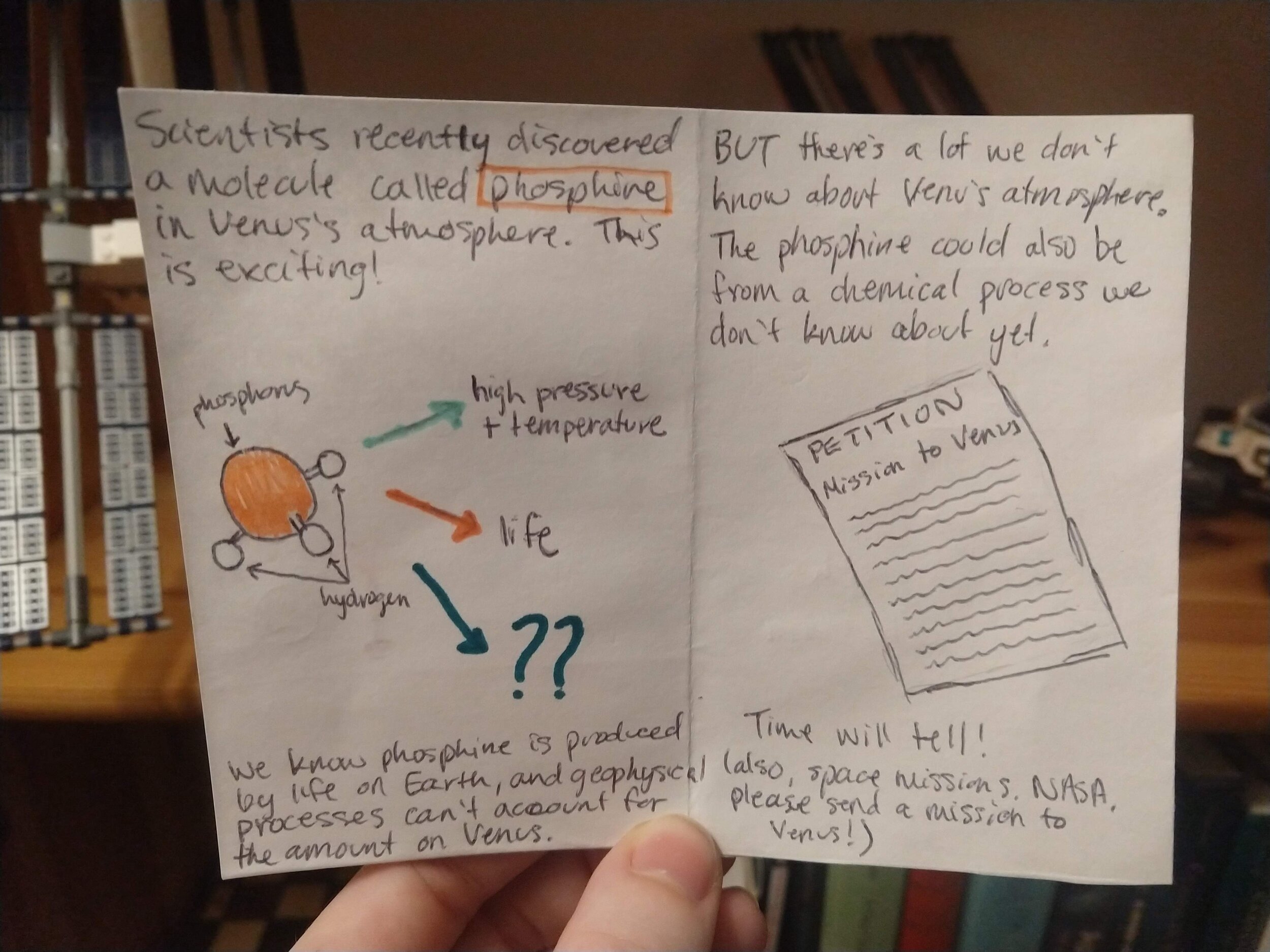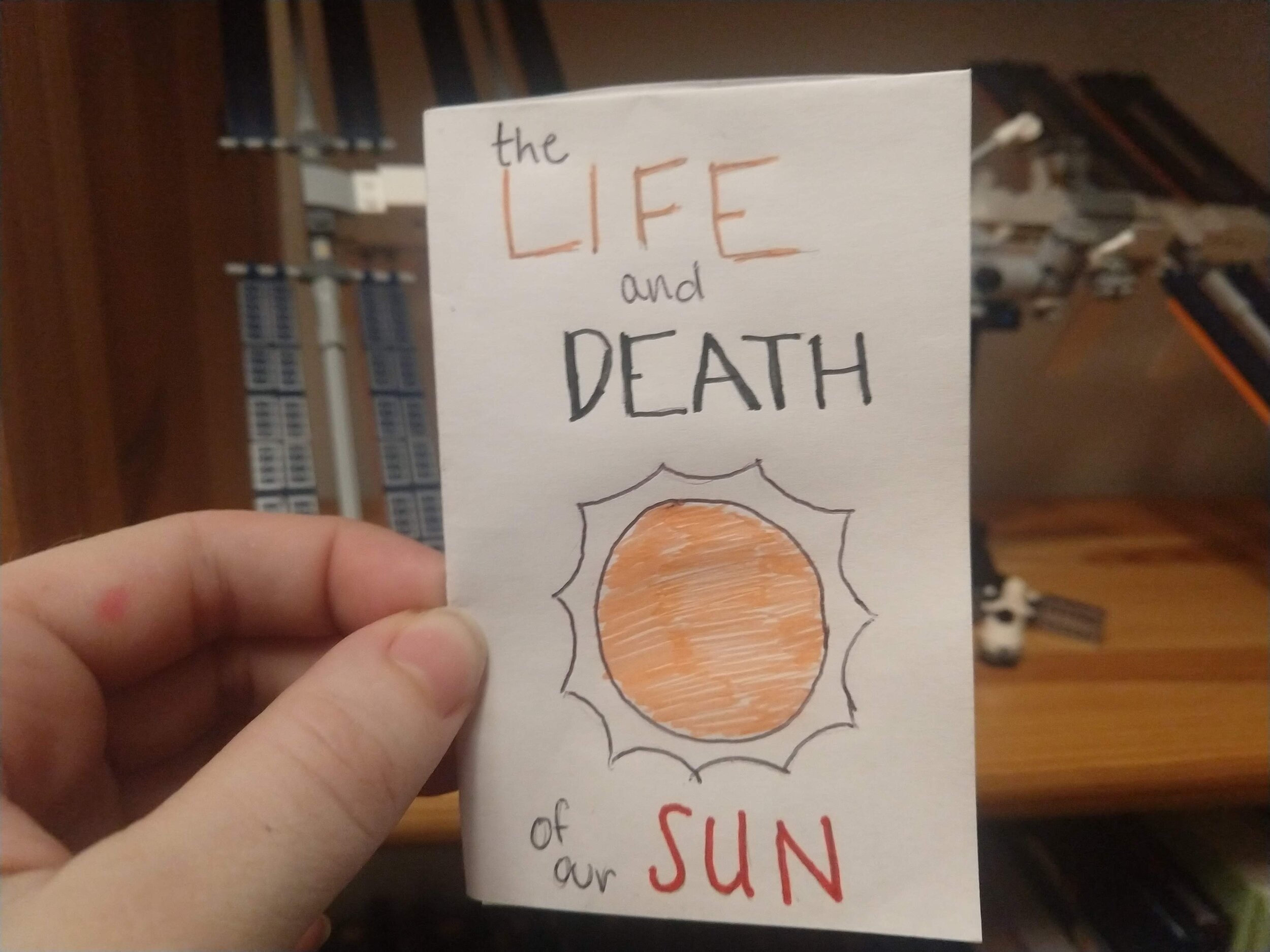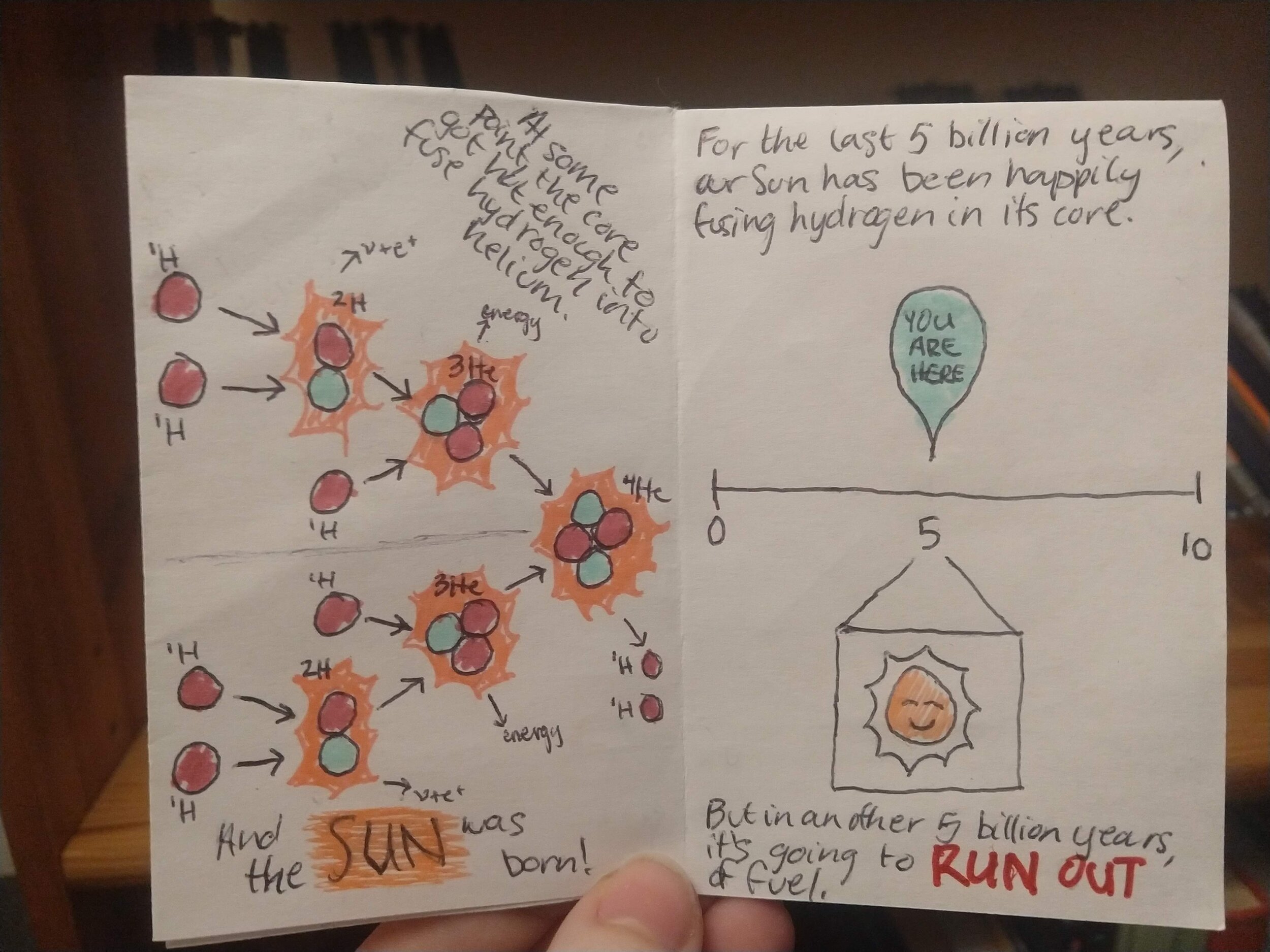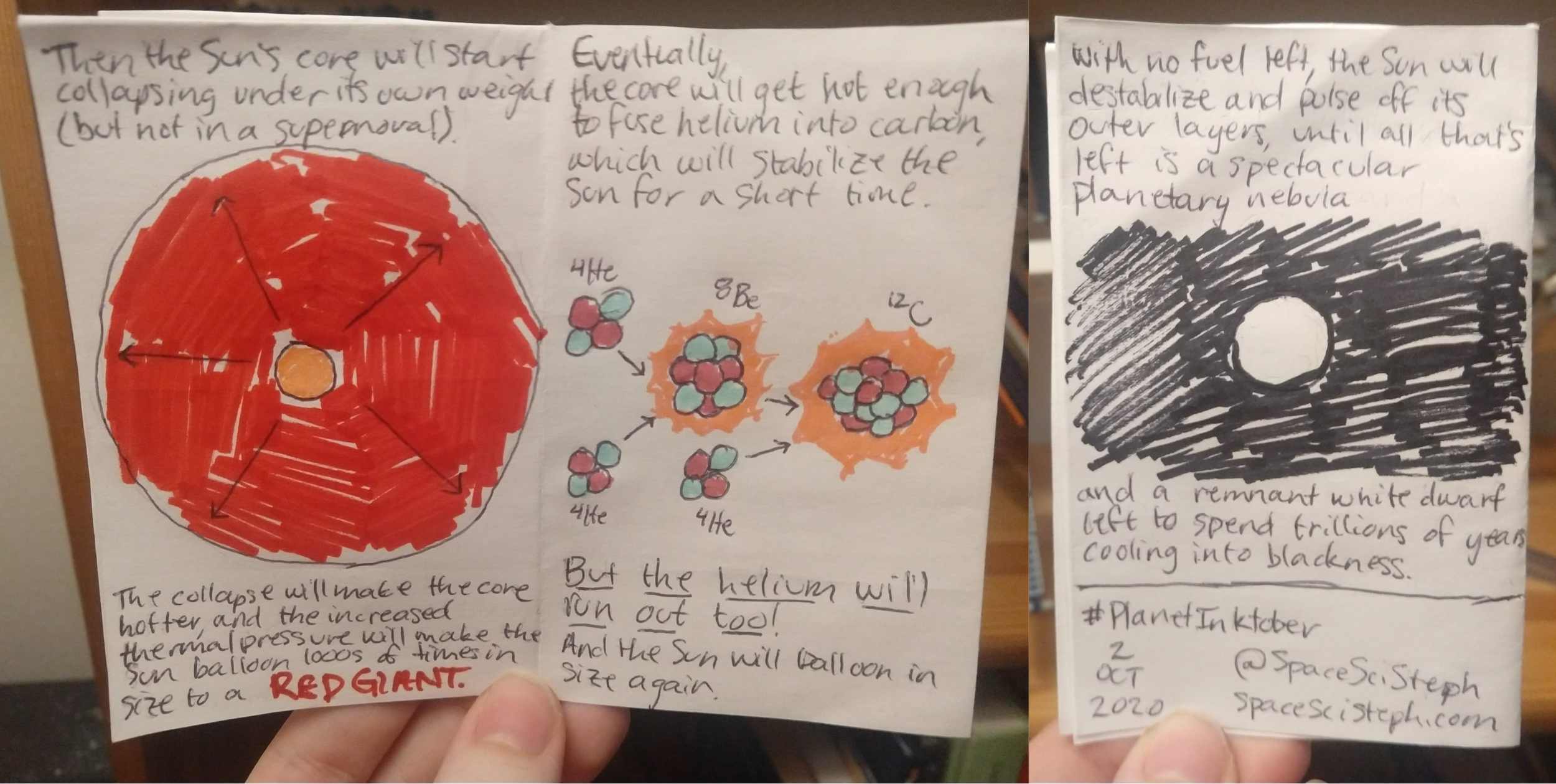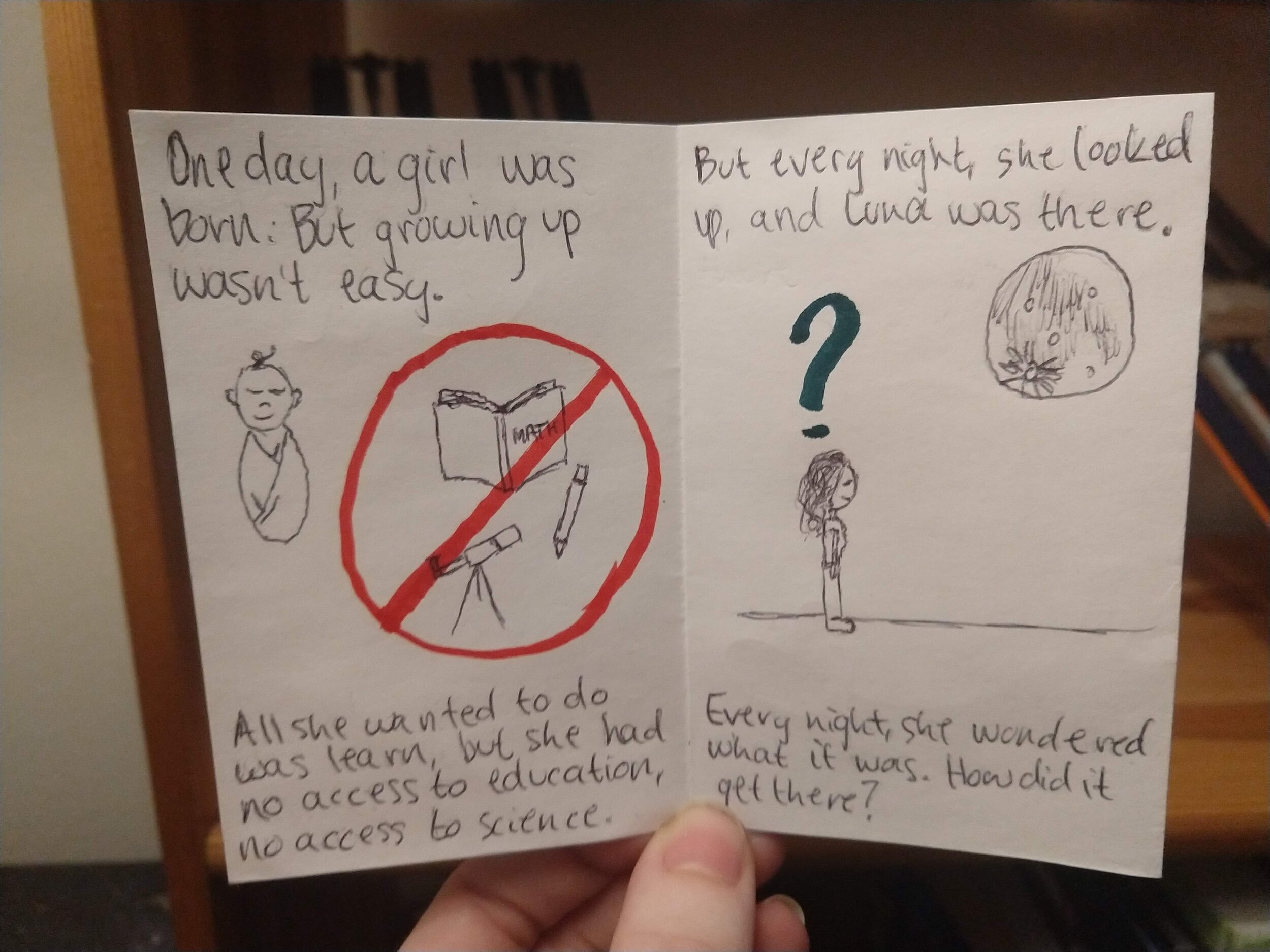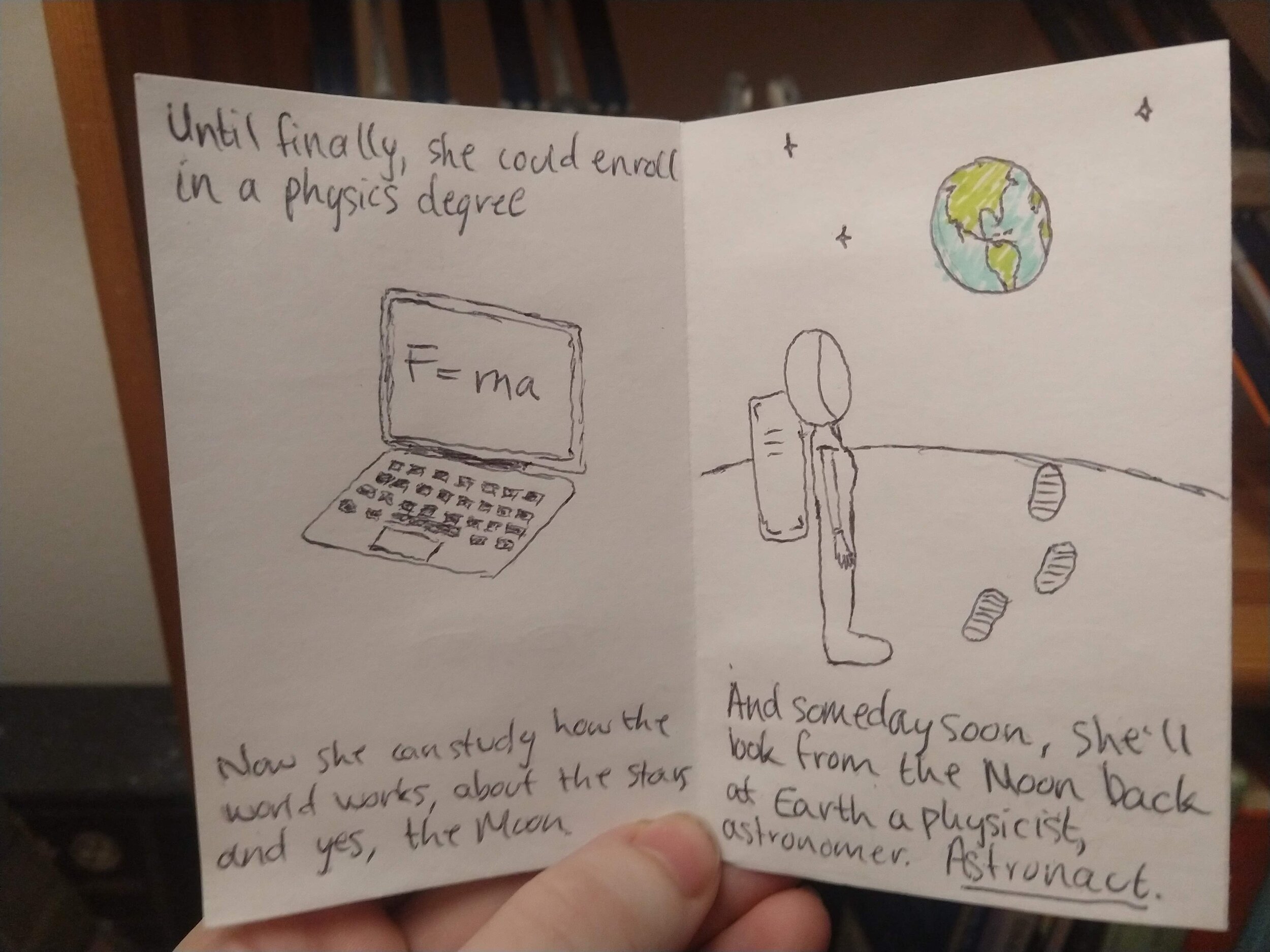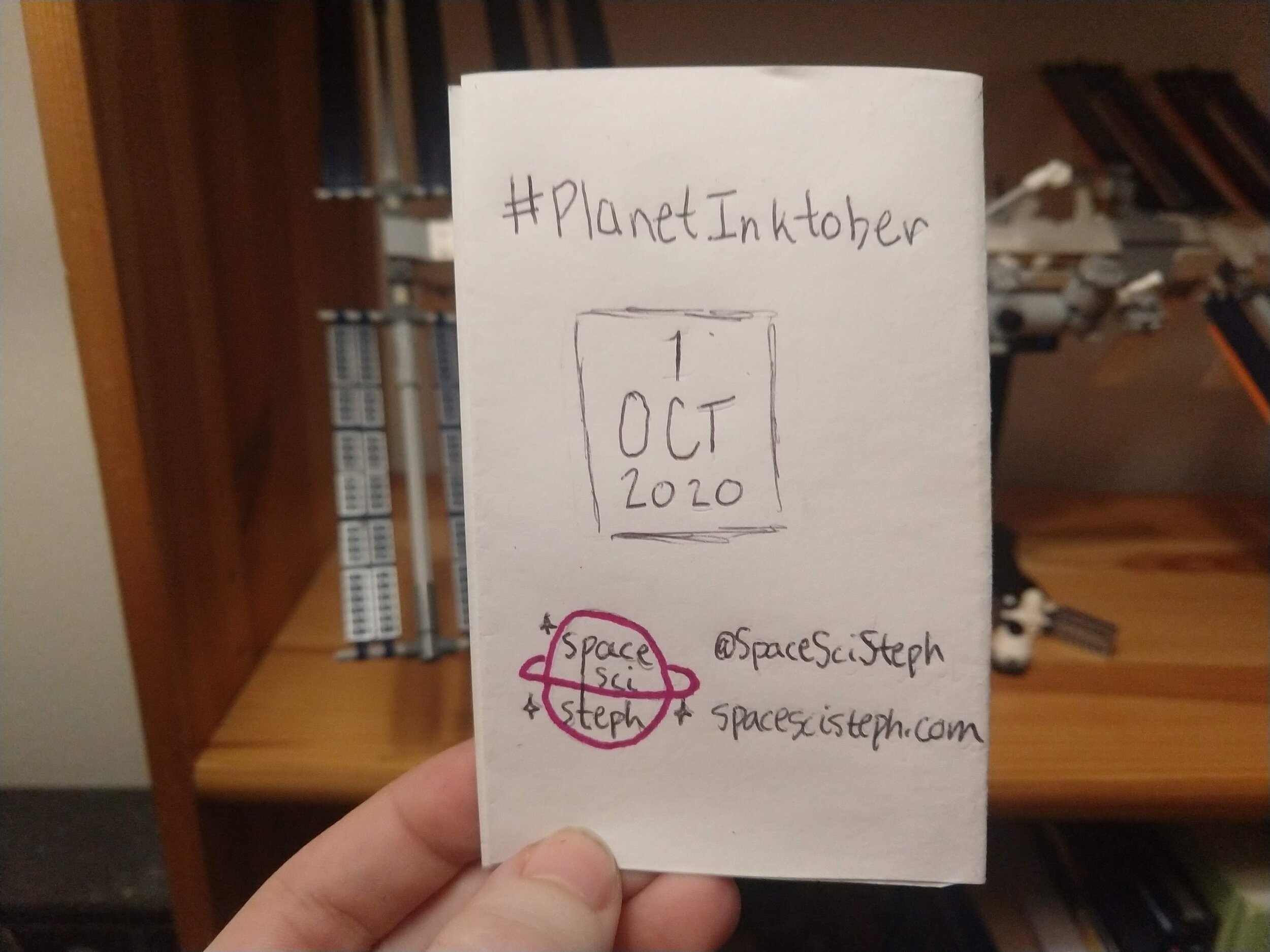#PlanetInktober Day 3: Venus's Clouds
/Woohoo! Day three!
I’m getting real tired of my handwriting, so soon I’ll probably explore more digital zine creation options…but for now, here’s a zine about Venus, its atmosphere, and its clouds!
The Clouds of Venus
Venus is the brightest “star” in the night sky. And that’s because it’s close, and because its clouds reflect over 75% of the sunlight that hit them.
For most of history, astronomers thought a tropical paradise lived under Venus’s perpetual clouds. But ground-based observations in the 1950s revealed a hellscape.
The hellscape was confirmed by NASA’s flyby mission, Mariner 2, and Russias’s orbiter-lander mission, Venera 9. The lander was melted/crushed after only 53 minutes.
We’ve learned a lot about Venus’s clouds since then. They’re mostly sulfuric acid. And though it’s 880ºF at the surface, up in the clouds it feels more like Earth.
Scientists recently discovered a molecule called Phosphine in Venus’s Atmosphere. This is exciting! We know phosphine is produced by life on Earth, and geophysical processes can’t account for the amount on Venus.
BUT there’s a lot we don’t know about Venus’s atmosphere. The phosphine could also be from a chemical process we don’t know about yet. Time will tell! (Also, space missions. NASA, please send a mission to Venus!)
